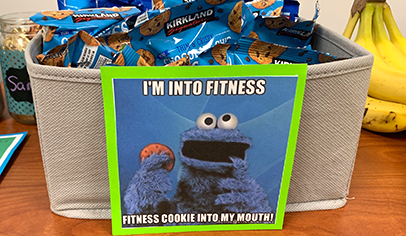Elizabeth Metz left her first PTO meeting in tears. "It was horrible," she recalls. "Everybody knew each other, but I didn't know anyone." Each time she offered up an idea, an officer quickly shot back, "We've tried that, and it doesn't work," or "We've done this for a long time, and we know what works best." It was Metz's first encounter with a PTO clique.
To Metz, the Manzanita Elementary School PTO in Kingman, Ariz., screamed "clique." But chances are the well-meaning members had no idea that they looked like an exclusive club. Most PTOs don't realize it when they are giving off unwelcoming vibes. And even the most cliquey PTOs often don't know that to outsiders, they look like a grown-up version of a high school cheerleading squad, full of popular girls who wouldn't deign to be seen with girls of lesser status.
Even when outsiders see a clique, PTO insiders often believe they are welcoming to new members. Officers and other active members just think that they're the only ones who want to volunteer and that others aren't interested in doing the work. But more often than not, it's precisely that attitude that keeps fresh recruits away.
Even if a PTO truly is not cliquey, it must actively fight the perception that the group is unwelcoming. Because many parents have preconceived ideas equating parent groups with cliques, PTOs have to reach out to counter the idea that theirs is an exclusive club.
"I was never involved in PTO before this year because I thought only snobbish women ran the group," says Cathie Bach, who is now a vice president of the Liberty Elementary School PTO in Carpentersville, Ill. She has two children in the school. She also has a 17-year-old but was too PTO-averse to volunteer when that child was young. Bach has been stunned by how wrong she was. "I've been surprised that it hasn't been cliquey," she says. "But we're bending over backward to make sure cliques don't form."
Liberty Elementary opened in September 2002, drawing students from four elementary schools in the same district. Planning for the PTO started the previous April, and the founders realized they had to work to include members from each of the four feeder schools and from the town's many ethnic groups, which include Latin Americans, Native Americans, Indians, Pakistanis, and Polish immigrants.
"PTOs don't have to be cliques," says Bach, who would have been the last to believe that statement before her PTO involvement began last year. The key is to take steps to show the group is not exclusive and work hard at welcoming new recruits. Here are 10 tips for eliminating cliques from your PTO.
Rotate roles.
"The perception of PTO cliques is almost always due to the lack of rotation of roles," says Susan Ellis, president of Energize Inc., a Philadelphia-based consulting, training, and publishing firm specializing in volunteer issues. Year after year, one person runs the book sale, and someone else always organizes the holiday fair. The president's term is longer than that of George W. Bush. "People get entrenched in certain positions, and that keeps newcomers out, says Ellis."
Allow people to help.
When room is made for new members, it's often the crummy jobs. New people get assigned clean-up, for example, and along with the dustpan and broom, they get the perception that there's no room for their contributions.
PTO members perennially complain that no one wants to do the jobs they do. However, Ellis says that often translates to: It's been a long time since we asked anyone to help. Or: It's been a long time since we've given away a piece of a job—helping plan the book fair, for example—to allow newcomers to test the waters.
Wear name tags.
"I don't care how long a group has been meeting; everyone should wear a name tag," says Ellis. People feel awkward when they think that everyone knows everyone else. Name tags are a simple tool for making visitors feel more comfortable. They also put second- and third-time visitors at ease if they forget people's names from month to month. And they help officers and long-time members greet newcomers with enthusiasm when they return—even if they don't really remember their names.
Before every meeting begins at the Liberty Elementary PTO, all members are asked to introduce themselves. People say their names and tell which grades they have children in. The introductions also give teachers who attend a chance to introduce themselves. Otherwise, some teachers' presence might go unnoticed.
Create a welcoming committee.
Ellis also recommends that each PTO designate one or two members as the welcoming committee. These welcomers greet new faces, help gauge where newcomers' interests are, and try to match them to a committee or project.
It's important for the welcoming committee to touch base with newcomers at their second and third meetings, too, to make sure they're finding their way around and getting involved. "I've seen several groups where the welcome was excellent the first time you came, but not the second and third times," says Ellis. "The welcome needs to be sustained over the first several meetings to really engage the new person."
Serve refreshments.
Elizabeth Metz, who left her first parent group meeting in tears, did return to the PTO. She got involved and moved up to become the group's president, always knowing that if she made it to the top, she'd work to weed out cliques.
Among her first acts as president was to create a hospitality committee that would set up a refreshment table at every meeting. "When parents stand around a table with a cup of punch and a cookie, they'll chitchat," says Metz. "That went a long way toward getting people introduced to each other."
Match old-timers and newcomers.
In her Houston school, Tina Barrett says, the PTO tries to team new parents with seasoned members. This strategy also helps spread out newcomers among the PTO's many committees. "It's been a great way to get new ideas mixed with old traditions," Barrett adds.
Be visible.
The Liberty Elementary PTO makes sure that someone from the group speaks for at least a few minutes at every event the school holds, including staff meetings, open houses, and music functions. "We come right out and tell people that we'd love to have their involvement," says Bach.
The speakers also briefly tell parents and teachers about the kinds of projects the PTO is working on. For example, the PTO recently spent $6,000 on new swings for the school playground. If members didn't tell parents that, they might not realize who had worked so hard to raise the money to install equipment for their children.
"I never knew all of the great things the PTO did until I joined," says Bach.
Send different people to events.
To fight the perception that the PTO is the same people all the time, the Liberty Elementary PTO is careful to rotate the people who are going to talk on behalf of the group at school events. "We want to make sure that folks don't see the same face over and over," says Bach. "If parents see a lot of different people, we hope they'll think, 'Hey, a lot of people really do get involved. Maybe I should find out what I've been missing.' "
Recruit.
Ellis agrees that to break through the clique barrier, PTOs need to be out asking for new members. "There's a big difference between publicity and recruitment," says Ellis. PTOs rely too much on notices and newsletters, she says. A notice is not recruitment; it's information. If PTOs want new members, they need to go out and ask for them.
Build diversity.
Increasing the diversity of a PTO will help get rid of illusions that the group is a clique. Ellis stresses that there are many types of diversity that PTOs can strive for: diversity of gender, class, neighborhoods, and race.
One of the best tools for building diversity is the telephone. Potential new members—kindergarten parents, for example—should get phone calls asking them to join. And Ellis stresses that PTOs should not be satisfied with contacting just one member of a new group. "It's easier to get three than to get one," she says. "No one wants to be a token."
Building Friendships
Friendships are often a big motivator in getting parents to join PTOs. If you have a friend who's a member, it's much easier to wander into a monthly meeting or sign up to volunteer than it would be if you were walking into a roomful of strangers.
Some new research shows that friendships among parents affect more than just PTO membership, however. In fact, the more friendships a parent has with other parents at the school, the more likely it is that the parent will become involved at the school. And since children with involved parents tend to perform better in school, this new research makes a compelling case that PTO members should be trying to reach out to as many parents as possible.
The implications of the research are really quite simple: Old-fashioned human contact makes a difference. The more PTO leadership can do to encourage parents to talk to one another and establish relationships, the more likely it is that more parents will be involved. In other words, phone calls trump newsletters, and handshakes outshine emails.
Parents would probably be startled to know that their friendships are fodder for academics who are conducting complex scientific studies. But educators, sociologists, and psychologists are increasingly looking at all the factors that affect parent involvement in their children's education. Among the researchers is Steven B. Sheldon, an education psychologist at the National Network of Partnership Schools at Johns Hopkins University in Baltimore.
Sheldon studied parents at two Michigan elementary schools, one urban and one suburban, using questionnaires and a series of interviews. Sheldon found that parents who reported talking with more parents whose children attend the same school tended to be more involved in the school. He also found that when parents have friendships outside the school in which they talk about their children, those parents are more likely to be involved with working with their child at home. Put together those relationships inside and outside the school, and Sheldon found that the bigger a parent's social network, the more likely the parent is to be involved in her child's education.
Perhaps most striking about Sheldon's results was the idea that just one or two friendships with other school parents can spur parents to get more involved. "The average number of friendships I found was two," says Sheldon. "So it doesn't mean that a parent has to be the most popular parent to have these important relationships. One or two connections really have the potential for making a difference in the role parents play in children's lives."
Almost one-third of parents reported not talking about their school or their child's education with any other parents of children at the school. "These parents may be at a disadvantage in their ability to help their children at school," Sheldon says.
Strategies for PTOs
This scientifically gathered data yields some nuts-and-bolts strategies for PTO leaders. A phone tree can be one of the most powerful weapons in the arsenal of PTO leaders. Phone trees require parents to talk to one another, and often the conversation strays from the initial message to points of common interest among their children. "These calls can have a real impact on getting parents connected to the school community," Sheldon stresses.
Personal connections also can serve to break down cliques. That's an important spillover effect that can help eradicate in-groups that scare away potential new members. Sheldon often has observed the "coups" that take place when one group of friends leaves a PTO and another group comes in to take over the abandoned leadership positions.
"If groups can make connections with other groups, it can help eliminate these 'waves' of leadership that happen so often," he says. One simple way to do this is to establish mentoring programs that pair veteran members with newcomers.















